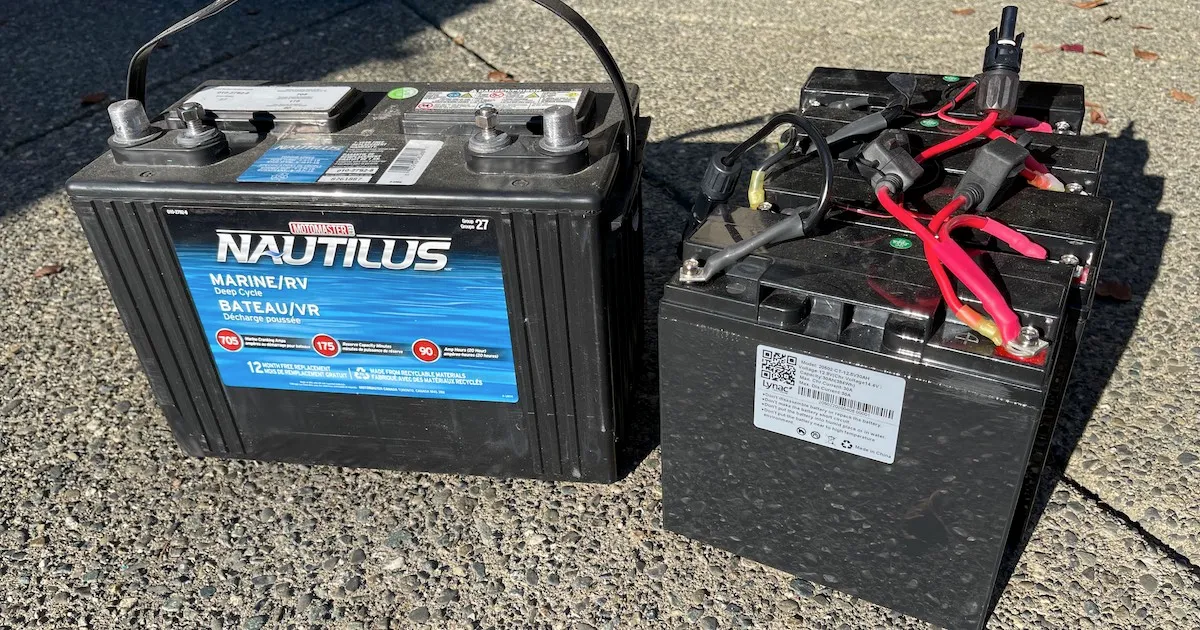When it comes to maritime adventures or off-grid power solutions, the choice of batteries becomes paramount. We’ll embark on a journey through the distinctions between marine battery vs deep cycle battery, shedding light on their unique features. Additionally, we’ll explore the art of charging Sealed Lead Acid (SLA) batteries, offering insights into maintaining these powerhouses for extended performance.
Marine Battery vs. Deep Cycle Battery:
Primary Functions:
- Marine Batteries: Primarily designed for starting boat engines, marine batteries deliver short bursts of high power to crank the engine. They are adept at handling high current draws but may not perform as efficiently in deep discharge cycles.
- Deep Cycle Batteries: Tailored for sustained, deep discharge cycles, deep cycle batteries are ideal for powering accessories such as trolling motors, lights, and navigation equipment on boats. They provide a steady and reliable source of power over an extended period.
Construction and Durability:
- Marine Batteries: Typically provide higher cranking amps for a quick and powerful engine start. However, their capacity for sustained deep discharges may be limited compared to deep cycle batteries.
- Deep Cycle Batteries: Offer a stable voltage output over a more extended period, making them well-suited for applications requiring consistent and prolonged power delivery.
- Marine Batteries: Constructed to withstand the vibrations and harsh conditions of marine environments, marine batteries prioritize durability and resilience to ensure reliable engine starts.
- Deep Cycle Batteries: Engineered with thicker plates and designed for repeated deep discharges, deep cycle batteries prioritize longevity and robust performance in applications requiring continuous power.
Charging SLA Lead Acid Batteries:
Charging Stages:
- Bulk Charging: The initial stage where the battery receives the maximum current until it reaches a preset voltage.
- Absorption Charging: Voltage is maintained while the current decreases, ensuring the battery is fully charged.
- Float Charging: Maintains the battery at a lower voltage to prevent overcharging and electrolyte loss during prolonged storage.
Charging Rates:
- Smart Chargers: Equipped with microprocessors, smart chargers adjust charging rates based on battery condition, preventing overcharging and extending battery life.
- Traditional Chargers: Manual chargers require monitoring and may risk overcharging if not disconnected promptly.
- Cyclic Charging: Suitable for deep cycle applications, involving regular deep discharges and charges.
- Float Charging: Ideal for maintenance charging, ensuring the battery remains at optimal levels without overcharging.
Conclusion:
Choosing between marine batteries and deep cycle batteries depends on your specific needs, whether it be quick engine starts on the water or providing sustained power for auxiliary devices. Additionally, mastering the art of charging SLA lead acid batteries is essential for optimizing performance and ensuring a reliable power source for your marine or off-grid adventures.
As technology continues to evolve, understanding the unique characteristics and maintenance requirements of these batteries becomes increasingly crucial for a seamless and enjoyable experience on the water or off the grid.

